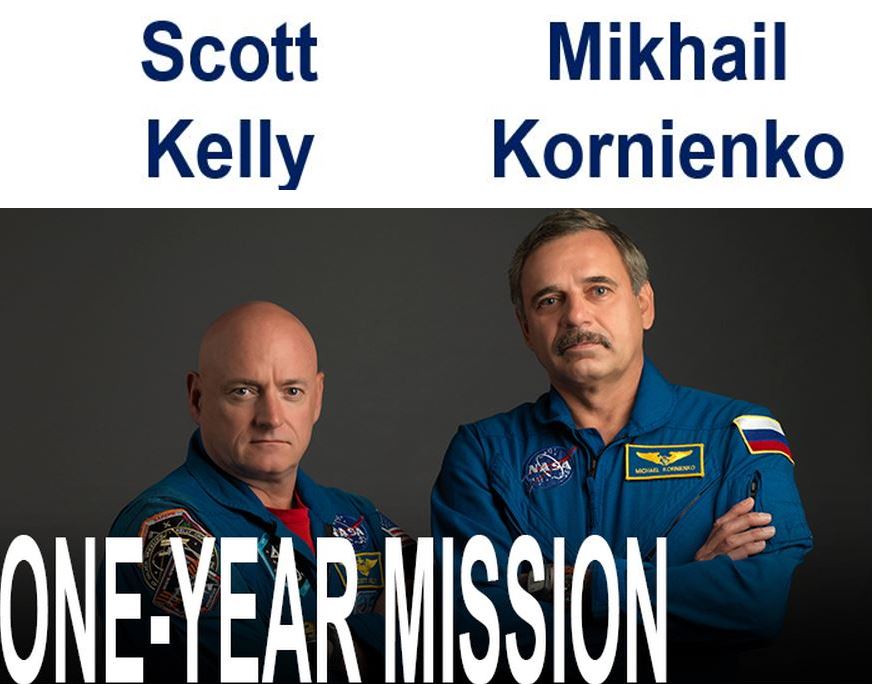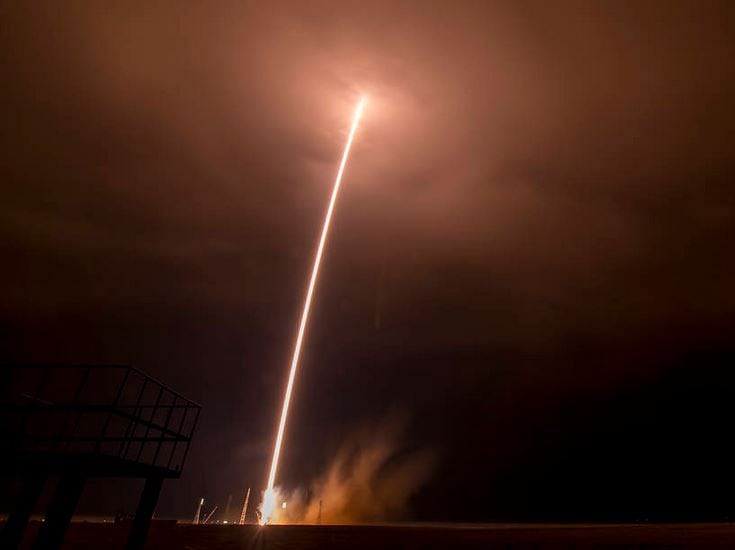American astronaut Scott Kelly and Russian cosmonaut Mikhail Kornienko were taken by the Soyuz spacecraft that successfully docked with the International Space Station (ISS) to start their marathon 342-day stay in space.
Their nearly 1-year-long stay is almost twice as long as standard ISS missions.
Scientists want to see what the effects of living for prolonged periods of weightlessness might be on human muscles, bone mass, heart function and overall health, as they gather data for a future missions into deep space, including Mars.
The Russian Soyuz capsule also transported Russian cosmonaut Gennady Padalka who will be in space for 6 months. The rocket lifted off on Saturday from Russia’s space facility in Kazakhstan, the Baikonur Cosmodrome (Космодро́м Байкону́р).

American Astronaut Scott Kelly (left) and Russian Cosmonaut Mikhail Kornienko will spend nearly a year in space. (Image: NASA)
Two astronauts will set new record
ISS says if the two astronauts last the 342 days, it will be the longest time two humans live continuously at the ISS. However, in the 1990s several Russian cosmonauts spent 16 months at the Mir Russian space station.
NASA says the astronauts will support hundreds of experiments in physical science, biotechnology, biology and Earth science – research that impact life on our planet.
Several experiments will compare samples throughout the year from Scott Kelly and his twin brother Mark Kelly, a former NASA astronaut.
By gathering and analyzing data on samples from the genetically-identical Kelly brothers, the scientists will be able to identify any subtle changes caused by being in space for so long.
During the mission both Russian and American cargo supply vehicles will bring supplies to the station, including several tons of food, fuel, as well as a host of new science investigations.
When Cristoforetti, Virts and Shkaplerov return home in May this year, Pakalka will become commander for Expedition 44.
When Padalka concludes his six month mission, he will become the first 4-time station commander, holding the record for most cumulative time spent in space.

Soyuz Launches With Expedition 43 Crew. (Image: NASA)
Mr. Kelly’s health concerns
Ahead of the launch, Mr. Kelly said in a news conference:
“This is the first time we’re doing it as an international partnership, which I think is one of the great success stories of the International Space Station.”
“If we ever go beyond Low Earth orbit again, perhaps to Mars, because of the cost and the complexity it will most likely be an international mission, so I see this as a stepping stone to that.”
Mr. Kelly expressed concern regarding radiation and living in a zero gravity environment, particularly the potential damage to his eyesight, bone density and immune system.
Mr. Kelly said:
“I’m hopeful that there is not a big cliff out there with regards to our ability to stay and live and work in space for longer periods of time. But we are not going to know that until we have actually done it. The jury is out.”
NASA Video – Physical Performance Studies
Dr. John Charles from NASA’s human research program talks about the studies that will be carried out to learn more about the physical effects of weightlessness on human bones, muscles and heart.
